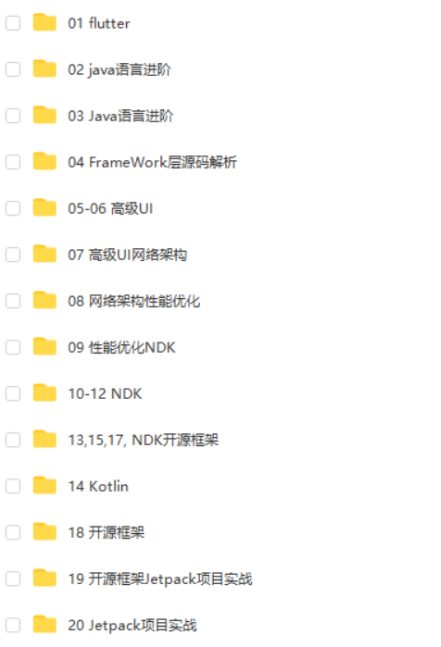[9,20],
[15,7]
]
/**
-
Definition for a binary tree node.
-
public class TreeNode {
-
int val; -
TreeNode left; -
TreeNode right; -
TreeNode(int x) { val = x; } -
}
*/
class Solution {
public List<List> levelOrder(TreeNode root) {
List<List> lists = new ArrayList<>();
if (root != null) levelOrder(lists, root, 0);
return lists;
}
void levelOrder(List<List> lists, TreeNode root, int level) {
List list;
if (lists == null || lists.size() < level + 1) list = new ArrayList<>();
else list = lists.get(level);
list.add(root.val);
if (lists.size() > level) lists.remove(level);
lists.add(level, list);
if (root.left != null) levelOrder(lists, root.left, level + 1);
if (root.right != null) levelOrder(lists, root.right, level + 1);
}
}
104. 二叉树的最大深度 (Maximum Depth of Binary Tree)
[Description]
Given a binary tree, find its maximum depth.
The maximum depth is the number of nodes along the longest path from the root node down to the farthest leaf node.
Note: A leaf is a node with no children.
[Example]
Given binary tree [3,9,20,null,null,15,7],
3
/ \
9 20
/ \
15 7
return its depth = 3.
[Answer]
/**
-
Definition for a binary tree node.
-
public class TreeNode {
-
int val; -
TreeNode left; -
TreeNode right; -
TreeNode(int x) { val = x; } -
}
*/
class Solution {
public int maxDepth(TreeNode root) {
if(root == null) return 0;
if(root.left == null && root.right == null)
return 1;
int maxL = maxDepth(root.left);
int maxR = maxDepth(root.right);
if(maxL < maxR)
return 1 + maxR;
else
return 1 + maxL;
}
}
108. 将有序数组转换为二叉搜索树 (Convert Sorted Array to Binary Search Tree)
将一个按照升序排列的有序数组,转换为一棵高度平衡二叉搜索树。
本题中,一个高度平衡二叉树是指一个二叉树每个节点 的左右两个子树的高度差的绝对值不超过 1。
示例:
给定有序数组: [-10,-3,0,5,9],
一个可能的答案是:[0,-3,9,-10,null,5],它可以表示下面这个高度平衡二叉搜索树:
0
/ \
-3 9
/ /
-10 5
/**
-
Definition for a binary tree node.
-
public class TreeNode {
-
int val; -
TreeNode left; -
TreeNode right; -
TreeNode(int x) { val = x; } -
}
*/
class Solution {
public TreeNode sortedArrayToBST(int[] nums) {
TreeNode root;
if (nums.length == 0)
return null;
if (nums.length == 1)
root = new TreeNode(nums[0]);
else {
root = new TreeNode(nums.length / 2);
root.val = nums[nums.length/2];
int[] left = new int[nums.length / 2];
int[] right = new int[nums.length - 1 - nums.length / 2];
for (int i = 0; i < nums.length; i++) {
if (i < nums.length / 2) left[i] = nums[i];
else if (i > nums.length / 2) right[i - nums.length / 2 - 1] = nums[i];
}
root.left = sortedArrayToBST(left);
root.right = sortedArrayToBST(right);
}
return root;
}
}
110. 平衡二叉树 (Balanced Binary Tree)
给定一个二叉树,判断它是否是高度平衡的二叉树。
本题中,一棵高度平衡二叉树定义为:
一个二叉树每个节点 的左右两个子树的高度差的绝对值不超过 1 。
/**
-
Definition for a binary tree node.
-
public class TreeNode {
-
int val; -
TreeNode left; -
TreeNode right; -
TreeNode(int x) { val = x; } -
}
*/
class Solution {
public boolean isBalanced(TreeNode root) {
if (root == null) return true;
if (root.left == null && root.right == null) return true;
return (Math.abs(maxDepth(root.left) - maxDepth(root.right)) < 2)
&& isBalanced(root.left) && isBalanced(root.right);
}
public int maxDepth(TreeNode root) {
if (root == null) return 0;
if (root.left == null && root.right == null) return 1;
else return 1 + Math.max(maxDepth(root.left), maxDepth(root.right));
}
}
111. 二叉树的最小深度 (Minimum Depth of Binary Tree)
给定一个二叉树,找出其最小深度。
最小深度是从根节点到最近叶子节点的最短路径上的节点数量。
说明:叶子节点是指没有子节点的节点。
/**
-
Definition for a binary tree node.
-
public class TreeNode {
-
int val; -
TreeNode left; -
TreeNode right; -
TreeNode(int x) { val = x; } -
}
*/
class Solution {
public int minDepth(TreeNode root) {
if (root == null) return 0;
if (root.left == null && root.right == null) return 1;
int min = Integer.MAX_VALUE;
if (root.left != null) min = minDepth(root.left);
if (root.right != null) min = Math.min(minDepth(root.right), min);
return min + 1;
}
}
112. 路径总和 (Path Sum)
给定一个二叉树和一个目标和,判断该树中是否存在根节点到叶子节点的路径,这条路径上所有节点值相加等于目标和。
说明: 叶子节点是指没有子节点的节点。
示例:
给定如下二叉树,以及目标和 sum = 22,
5
/ \
4 8
/ / \
11 13 4
/ \ \
7 2 1
返回 true, 因为存在目标和为 22 的根节点到叶子节点的路径 5->4->11->2。
/**
-
Definition for a binary tree node.
-
public class TreeNode {
-
int val; -
TreeNode left; -
TreeNode right; -
TreeNode(int x) { val = x; } -
}
*/
class Solution {
public boolean hasPathSum(TreeNode root, int sum) {
if (root == null) return false;
if (root.left == null && root.right == null) return sum == root.val;
else return hasPathSum(root.left, sum - root.val) || hasPathSum(root.right, sum - root.val);
}
}
118. 杨辉三角 (Pascal’s Triangle)
给定一个非负整数 numRows,生成杨辉三角的前 numRows 行。
在杨辉三角中,每个数是它左上方和右上方的数的和。
示例:
输入: 5
输出:
[
[1],
[1,1],
[1,2,1],
[1,3,3,1],
[1,4,6,4,1]
]
class Solution {
public List<List> generate(int numRows) {
List<List> result = new ArrayList<List>(numRows);
if (numRows == 0) return result;
List listRow0 = new ArrayList<>(1);
listRow0.add(1);
result.add(listRow0);
for (int i = 1; i < numRows; i++) {
List listRow = new ArrayList<>(i + 1);
for (int j = 0; j < i + 1; j++) {
if (j == 0 || j == i) listRow.add(1);
else {
listRow.add(result.get(i - 1).get(j - 1) + result.get(i - 1).get(j));
}
}
result.add(listRow);
}
return result;
}
}
119. 杨辉三角 II (Pascal’s Triangle II)
给定一个非负索引 k,其中 k ≤ 33,返回杨辉三角的第 k 行。
在杨辉三角中,每个数是它左上方和右上方的数的和。
示例:
输入: 3
输出: [1,3,3,1]
进阶:
你可以优化你的算法到 O(k) 空间复杂度吗?
class Solution {
// 119. 杨辉三角 II
public List getRow(int rowIndex) {
if (rowIndex == 0) {
List list0 = new ArrayList<>(1);
list0.add(1);
return list0;
} else {
List res = new ArrayList<>(rowIndex + 1);
List listPrev = getRow(rowIndex-1);
for (int i = 0; i < rowIndex + 1; i++) {
if (i == 0 || i == rowIndex) res.add(1);
else {
res.add(listPrev.get(i - 1) + listPrev.get(i));
}
}
return res;
}
}
}
121. 买卖股票的最佳时机 (Best Time to Buy and Sell Stock)
给定一个数组,它的第 i 个元素是一支给定股票第 i 天的价格。
如果你最多只允许完成一笔交易(即买入和卖出一支股票一次),设计一个算法来计算你所能获取的最大利润。
注意:你不能在买入股票前卖出股票。
示例 1:
输入: [7,1,5,3,6,4]
输出: 5
解释: 在第 2 天(股票价格 = 1)的时候买入,在第 5 天(股票价格 = 6)的时候卖出,最大利润 = 6-1 = 5 。
注意利润不能是 7-1 = 6, 因为卖出价格需要大于买入价格;同时,你不能在买入前卖出股票。
示例 2:
输入: [7,6,4,3,1]
输出: 0
解释: 在这种情况下, 没有交易完成, 所以最大利润为 0。
class Solution {
public int maxProfit(int[] prices) {
int minPrice = Integer.MAX_VALUE;
int maxProfit = 0;
for (int i = 0; i < prices.length; i++) {
int nowPrice = prices[i];
if (nowPrice < minPrice) minPrice = nowPrice;
else {
maxProfit = Math.max(maxProfit, nowPrice - minPrice);
}
}
return maxProfit;
}
}
125. 验证回文串 (Valid Palindrome)
给定一个字符串,验证它是否是回文串,只考虑字母和数字字符,可以忽略字母的大小写。
说明:本题中,我们将空字符串定义为有效的回文串。
示例 1:
输入: “A man, a plan, a canal: Panama”
输出: true
示例 2:
输入: “race a car”
输出: false
class Solution {
public boolean isPalindrome(String s) {
s = s.toLowerCase().replaceAll(“[a-zA-Z^0-9]”, “”);
if (s.length() == 0) return true;
else {
char[] strs = s.toCharArray();
for (int i = 0; i < strs.length / 2; i++) {
if (strs[i] != strs[strs.length - 1 - i]) return false;
}
}
return true;
}
}
136. 只出现一次的数字 (Single Number)
[Description]
Given a non-empty array of integers, every element appears twice except for one. Find that single one.
Note:
Your algorithm should have a linear runtime complexity. Could you implement it without using extra memory?
[Example]
Example 1:
Input: [2,2,1]
Output: 1
Example 2:
Input: [4,1,2,1,2]
Output: 4
[Answer]
// Runtime: 88 ms, faster than 5.02% of Java online submissions for Single Number.
// Memory Usage: 39 MB, less than 76.72% of Java online submissions for Single Number.
class Solution {
public int singleNumber(int[] nums) {
int size = nums.length;
if(size == 0) return 0;
if(size < 2) return nums[0];
ArrayList list = new ArrayList();
for (int i = 0; i < size; i++) {
int index = list.indexOf(nums[i]);
if (index >= 0)
list.remove(index);
else
list.add(nums[i]);
}
return list.get(0);
}
}
// Runtime: 7 ms, faster than 32.69% of Java online submissions for Single Number.
// Memory Usage: 39.2 MB, less than 73.94% of Java online submissions for Single Number.
class Solution {
public int singleNumber(int[] nums) {
Set set = new HashSet<>();
for(int i = 0; i < nums.length; i++) {
if(!set.contains(nums[i]))
set.add(nums[i]);
else
set.remove(nums[i]);
}
return set.iterator().next();
}
}
141. 环形链表 (Linked List Cycle)
给定一个链表,判断链表中是否有环。
如果链表中有某个节点,可以通过连续跟踪 next 指针再次到达,则链表中存在环。 为了表示给定链表中的环,我们使用整数 pos 来表示链表尾连接到链表中的位置(索引从 0 开始)。 如果 pos 是 -1,则在该链表中没有环。注意:pos 不作为参数进行传递,仅仅是为了标识链表的实际情况。
如果链表中存在环,则返回 true 。 否则,返回 false 。
进阶:
你能用 O(1)(即,常量)内存解决此问题吗?
/**
-
Definition for singly-linked list.
-
class ListNode {
-
int val; -
ListNode next; -
ListNode(int x) { -
val = x; -
next = null; -
} -
}
*/
public class Solution {
public boolean hasCycle(ListNode head) {
if (head == null || head.next == null) return false;
ListNode slow = head;
ListNode fast = head.next;
while (slow != fast) {
if (fast.next == null || fast.next.next == null) return false;
fast = fast.next.next;
slow = slow.next;
}
return true;
}
}
151. 翻转字符串里的单词 (Reverse Words in a String)
给定一个字符串,逐个翻转字符串中的每个单词。
说明:
无空格字符构成一个 单词 。
输入字符串可以在前面或者后面包含多余的空格,但是反转后的字符不能包括。
如果两个单词间有多余的空格,将反转后单词间的空格减少到只含一个。
示例 1:
输入:“the sky is blue”
输出:“blue is sky the”
示例 2:
输入:" hello world! "
输出:“world! hello”
解释:输入字符串可以在前面或者后面包含多余的空格,但是反转后的字符不能包括。
示例 3:
输入:“a good example”
输出:“example good a”
解释:如果两个单词间有多余的空格,将反转后单词间的空格减少到只含一个。
示例 4:
输入:s = " Bob Loves Alice "
输出:“Alice Loves Bob”
示例 5:
输入:s = “Alice does not even like bob”
输出:“bob like even not does Alice”
提示:
1 <= s.length <= 104
s 包含英文大小写字母、数字和空格 ’ ’
s 中 至少存在一个 单词
进阶:
请尝试使用 O(1) 额外空间复杂度的原地解法。
class Solution {
public String reverseWords(String s) {
String res = “”;
String word = “”;
int index = 0;
boolean start = false;
char[] chars = s.toCharArray();
while (index < chars.length) {
if (chars[index] == ’ ') {
if (start) {
if (res.equals(“”) || res.trim().length() == 0)
res = word;
else
res = word + " " + res;
start = false;
word = “”;
}
} else {
start = true;
word += chars[index];
}
index++;
}
if (!word.equals(“”)){
if (res.equals(“”) || res.trim().length() == 0)
res = word;
else
res = word + " " + res;
}
return res;
}
}
153. 寻找旋转排序数组中的最小值 (Find Minimum in Rotated Sorted Array)
假设按照升序排序的数组在预先未知的某个点上进行了旋转。例如,数组 [0,1,2,4,5,6,7] 可能变为 [4,5,6,7,0,1,2] 。
请找出其中最小的元素。
示例 1:
输入:nums = [3,4,5,1,2]
输出:1
示例 2:
输入:nums = [4,5,6,7,0,1,2]
输出:0
示例 3:
输入:nums = [1]
输出:1
提示:
1 <= nums.length <= 5000
-5000 <= nums[i] <= 5000
nums 中的所有整数都是 唯一 的
nums 原来是一个升序排序的数组,但在预先未知的某个点上进行了旋转
class Solution {
public int findMin(int[] nums) {
for (int i = nums.length - 1; i > 0; i–) {
if (nums[i] < nums[i - 1]) return nums[i];
}
return nums[0];
}
}
154. 寻找旋转排序数组中的最小值 II (Find Minimum in Rotated Sorted Array II)
假设按照升序排序的数组在预先未知的某个点上进行了旋转。
( 例如,数组 [0,1,2,4,5,6,7] 可能变为 [4,5,6,7,0,1,2] )。
请找出其中最小的元素。
注意数组中可能存在重复的元素。
示例 1:
输入: [1,3,5]
输出: 1
示例 2:
输入: [2,2,2,0,1]
输出: 0
说明:
这道题是 寻找旋转排序数组中的最小值 的延伸题目。
允许重复会影响算法的时间复杂度吗?会如何影响,为什么?
class Solution {
public int findMin(int[] nums) {
for (int i = nums.length - 1; i > 0; i–) {
if (nums[i] < nums[i - 1]) return nums[i];
}
return nums[0];
}
}
155. 最小栈 (Min Stack)
设计一个支持 push ,pop ,top 操作,并能在常数时间内检索到最小元素的栈。
push(x) —— 将元素 x 推入栈中。
pop() —— 删除栈顶的元素。
top() —— 获取栈顶元素。
getMin() —— 检索栈中的最小元素。
class MinStack {
/**
- initialize your data structure here.
*/
List listData;
List listMin;
public MinStack() {
listData = new LinkedList<>();
listMin = new LinkedList<>();
}
public void push(int x) {
listData.add(x);
if (listMin.size() > 0)
listMin.add(Math.min(x, getMin()));
else listMin.add(x);
}
public void pop() {
listData.remove(listData.size() - 1);
listMin.remove(listMin.size() - 1);
}
public int top() {
return listData.get(listData.size() - 1);
}
public int getMin() {
return listMin.get(listMin.size() - 1);
}
}
/**
-
Your MinStack object will be instantiated and called as such:
-
MinStack obj = new MinStack();
-
obj.push(x);
-
obj.pop();
-
int param_3 = obj.top();
-
int param_4 = obj.getMin();
*/
160. 相交链表 (Intersection of Two Linked Lists)
编写一个程序,找到两个单链表相交的起始节点。
注意:
如果两个链表没有交点,返回 null.
在返回结果后,两个链表仍须保持原有的结构。
可假定整个链表结构中没有循环。
程序尽量满足 O(n) 时间复杂度,且仅用 O(1) 内存。
/**
-
Definition for singly-linked list.
-
public class ListNode {
-
int val; -
ListNode next; -
ListNode(int x) { -
val = x; -
next = null; -
} -
}
*/
public class Solution {
public ListNode getIntersectionNode(ListNode headA, ListNode headB) {
ListNode pA = headA, pB = headB;
while(pA != pB) {
pA = (pA == null ? headB : pA.next);
pB = (pB == null ? headA : pB.next);
}
return pA;
}
}
自我介绍一下,小编13年上海交大毕业,曾经在小公司待过,也去过华为、OPPO等大厂,18年进入阿里一直到现在。
深知大多数初中级Android工程师,想要提升技能,往往是自己摸索成长或者是报班学习,但对于培训机构动则近万的学费,着实压力不小。自己不成体系的自学效果低效又漫长,而且极易碰到天花板技术停滞不前!
因此收集整理了一份《2024年Android移动开发全套学习资料》,初衷也很简单,就是希望能够帮助到想自学提升又不知道该从何学起的朋友,同时减轻大家的负担。





既有适合小白学习的零基础资料,也有适合3年以上经验的小伙伴深入学习提升的进阶课程,基本涵盖了95%以上Android开发知识点,真正体系化!
由于文件比较大,这里只是将部分目录截图出来,每个节点里面都包含大厂面经、学习笔记、源码讲义、实战项目、讲解视频,并且会持续更新!
如果你觉得这些内容对你有帮助,可以扫码获取!!(备注:Android)

题外话
不管怎么样,不论是什么样的大小面试,要想不被面试官虐的不要不要的,只有刷爆面试题题做好全面的准备,当然除了这个还需要在平时把自己的基础打扎实,这样不论面试官怎么样一个知识点里往死里凿,你也能应付如流啊
这里我为大家准备了一些我工作以来以及参与过的大大小小的面试收集总结出来的一套进阶学习的视频及面试专题资料包,主要还是希望大家在如今大环境不好的情况下面试能够顺利一点,希望可以帮助到大家~

欢迎评论区讨论。
《互联网大厂面试真题解析、进阶开发核心学习笔记、全套讲解视频、实战项目源码讲义》点击传送门即可获取!
x;
-
next = null; -
} -
}
*/
public class Solution {
public ListNode getIntersectionNode(ListNode headA, ListNode headB) {
ListNode pA = headA, pB = headB;
while(pA != pB) {
pA = (pA == null ? headB : pA.next);
pB = (pB == null ? headA : pB.next);
}
return pA;
}
}
自我介绍一下,小编13年上海交大毕业,曾经在小公司待过,也去过华为、OPPO等大厂,18年进入阿里一直到现在。
深知大多数初中级Android工程师,想要提升技能,往往是自己摸索成长或者是报班学习,但对于培训机构动则近万的学费,着实压力不小。自己不成体系的自学效果低效又漫长,而且极易碰到天花板技术停滞不前!
因此收集整理了一份《2024年Android移动开发全套学习资料》,初衷也很简单,就是希望能够帮助到想自学提升又不知道该从何学起的朋友,同时减轻大家的负担。
[外链图片转存中…(img-RrwXiVsp-1712782787500)]
[外链图片转存中…(img-LYyb8R9F-1712782787501)]
[外链图片转存中…(img-VE6jZwme-1712782787502)]
[外链图片转存中…(img-g4WweREq-1712782787502)]
[外链图片转存中…(img-V4pgXkaU-1712782787502)]
既有适合小白学习的零基础资料,也有适合3年以上经验的小伙伴深入学习提升的进阶课程,基本涵盖了95%以上Android开发知识点,真正体系化!
由于文件比较大,这里只是将部分目录截图出来,每个节点里面都包含大厂面经、学习笔记、源码讲义、实战项目、讲解视频,并且会持续更新!
如果你觉得这些内容对你有帮助,可以扫码获取!!(备注:Android)

题外话
不管怎么样,不论是什么样的大小面试,要想不被面试官虐的不要不要的,只有刷爆面试题题做好全面的准备,当然除了这个还需要在平时把自己的基础打扎实,这样不论面试官怎么样一个知识点里往死里凿,你也能应付如流啊
这里我为大家准备了一些我工作以来以及参与过的大大小小的面试收集总结出来的一套进阶学习的视频及面试专题资料包,主要还是希望大家在如今大环境不好的情况下面试能够顺利一点,希望可以帮助到大家~
[外链图片转存中…(img-8KkczSuZ-1712782787503)]
欢迎评论区讨论。
《互联网大厂面试真题解析、进阶开发核心学习笔记、全套讲解视频、实战项目源码讲义》点击传送门即可获取!






















 733
733

 被折叠的 条评论
为什么被折叠?
被折叠的 条评论
为什么被折叠?








